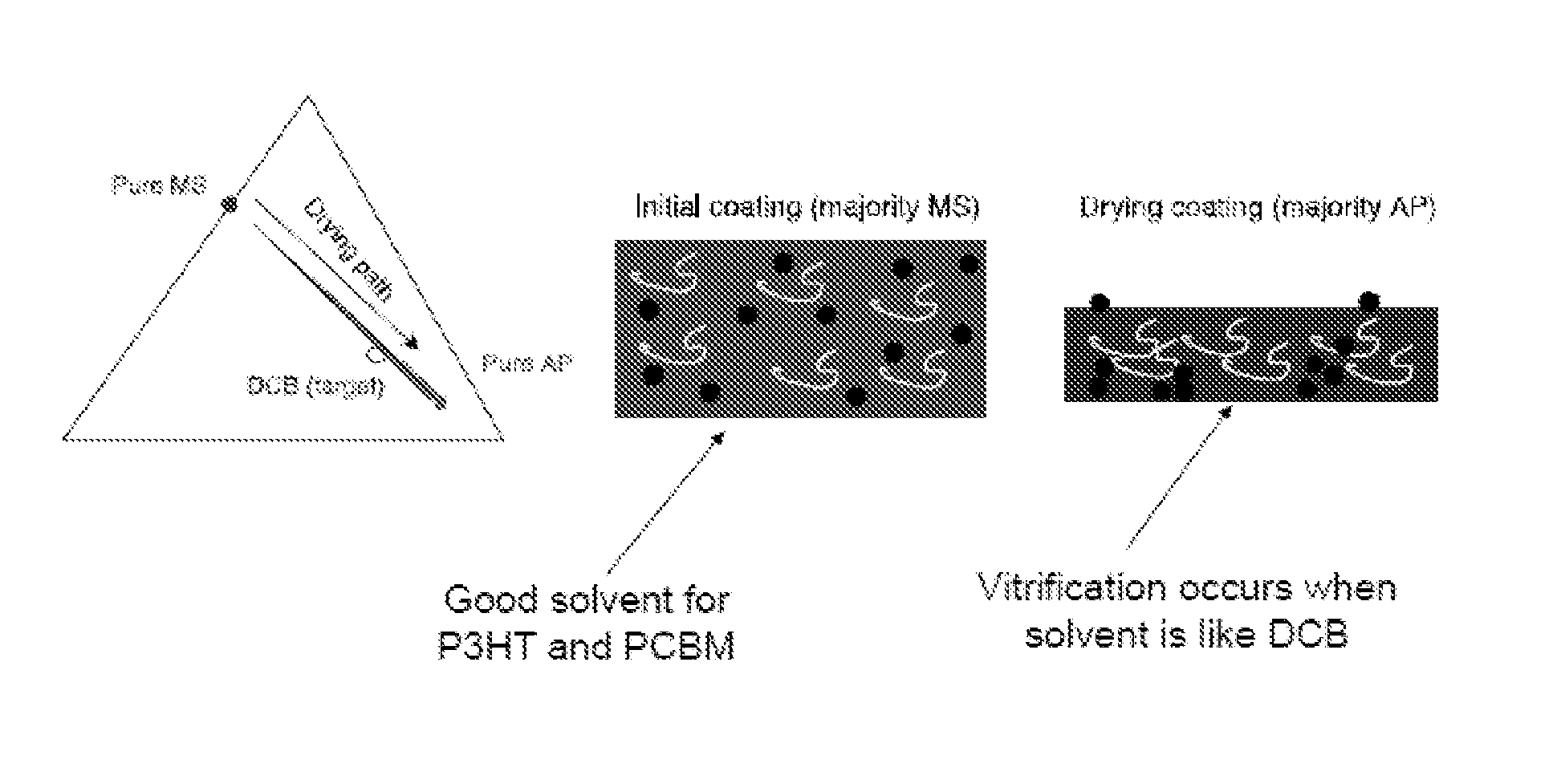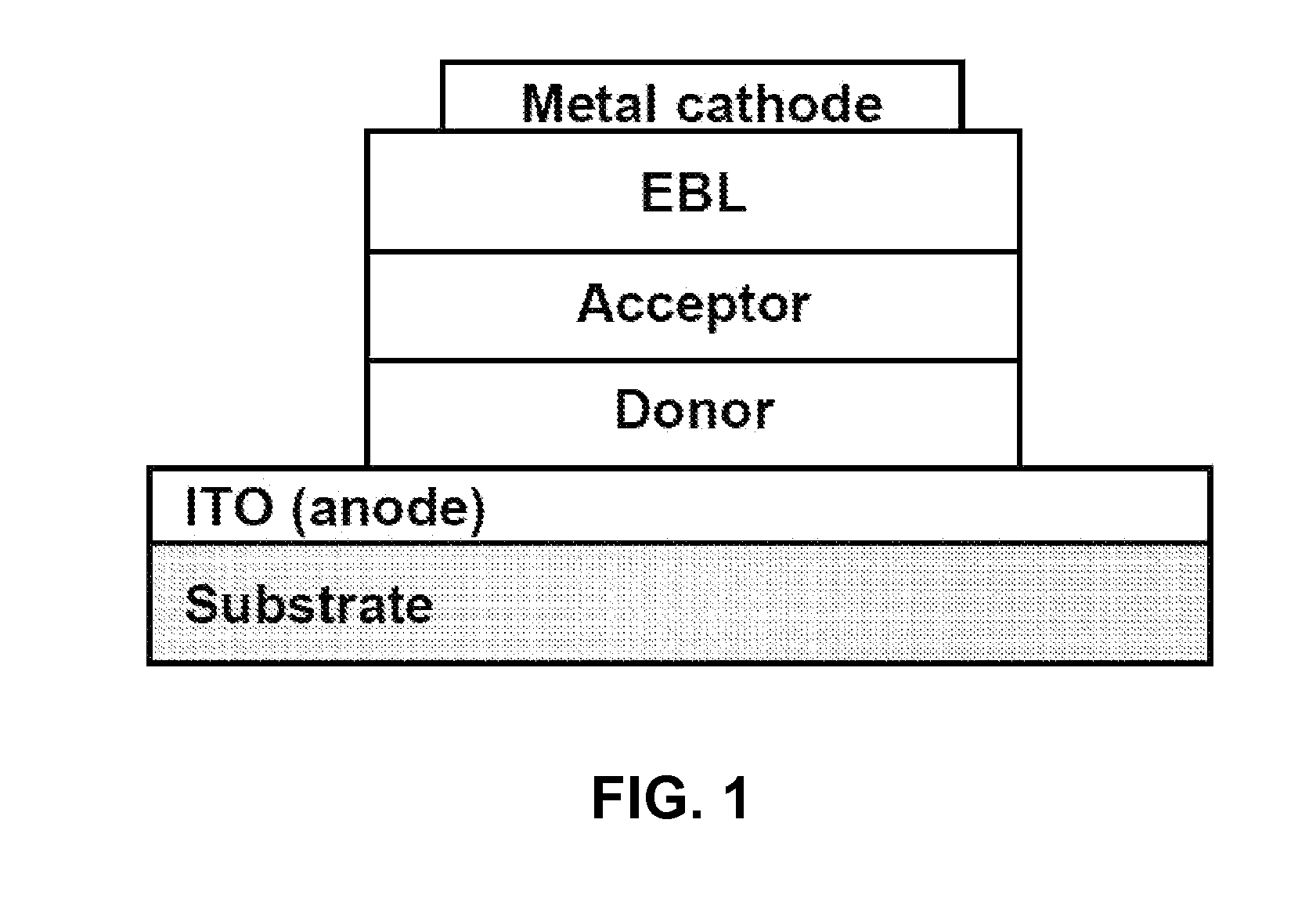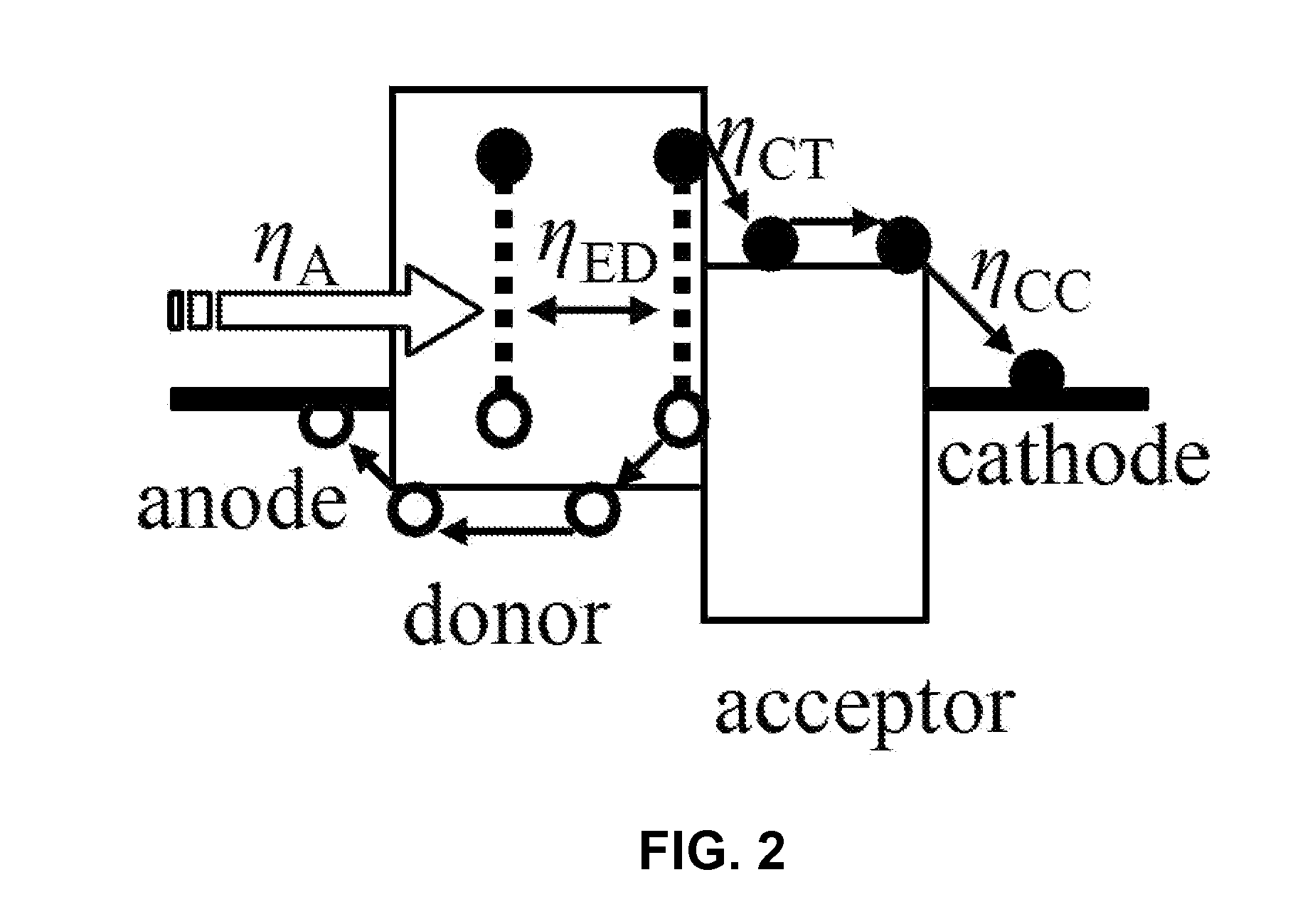Methods for fabricating bulk heterojunctions using solution processing techniques
a heterojunction and solution processing technology, applied in the field of heterojunction materials, can solve the problems of limited exciton diffusion length of plastic photovoltaic devices, incompatibility of traditional silicon based material processing techniques with plastic substrates,
- Summary
- Abstract
- Description
- Claims
- Application Information
AI Technical Summary
Benefits of technology
Problems solved by technology
Method used
Image
Examples
example 1
Preparation of Inventive P3HT / PCBM Blend
[0068]In a first example, a P3HT / PCBM blend was prepared. Regioregular P3HT (Rieke Metals, 4002E) and PCBM (Solenne) were dissolved in a 1:1 ratio to 1.0 wt % in either MS (98%, Alfa-Aesar) or a 80 vol. % MS-20 vol. % AP (Sigma-Aldrich) solvent mixture by heating and stirring for 2 h at 75° C. The mixture was then cooled slowly to ambient temperature.
example 2
Preparation of Comparative P3HT / PCBM Blend
[0069]In a second example, a comparative P3HT:PCBM blend (1.5 wt %, 1:1 weight ratio) was prepared by dissolving in DCB (Sigma-Aldrich) and stirring for 24 h at 40° C. The resulting mixture was then cooled slowly to ambient temperature.
example 3
Preparation of Solar Cells
[0070]In a third example, BHJ solar cells having the structure ITO / PEDOT / P3HT:PCBM / BCP / Al were fabricated by spin-coating the blends of P3HT:PCBM solutions prepared in Examples 1 and 2. Before the fabrication of the devices, the ITO-coated glass substrates were cleaned by scrubbing with detergent and then subjected to ultrasonic treatment sequentially in deionized water, acetone and isopropyl alcohol. The cleaned substrates were then UV-ozone treated for 40 min to remove residual organic contaminants. The cleaned ITO-coated glass substrates were modified by spin-coating a thin layer (˜40 nm) of PEDOT:PSS (Baytron P, Bayer) and cured at 200° C. for 30 min. The active layers were spin-coated in a nitrogen-filled glove box. The spin-coating conditions were optimized for each solution by adjusting the spin-coating speed and time in order to obtain the similar film thickness and drying time for the as-cast films. The as-cast films were dried overnight. After dry...
PUM
 Login to View More
Login to View More Abstract
Description
Claims
Application Information
 Login to View More
Login to View More - R&D
- Intellectual Property
- Life Sciences
- Materials
- Tech Scout
- Unparalleled Data Quality
- Higher Quality Content
- 60% Fewer Hallucinations
Browse by: Latest US Patents, China's latest patents, Technical Efficacy Thesaurus, Application Domain, Technology Topic, Popular Technical Reports.
© 2025 PatSnap. All rights reserved.Legal|Privacy policy|Modern Slavery Act Transparency Statement|Sitemap|About US| Contact US: help@patsnap.com



